
Article Summary: Acadia National Park Facts
Acadia National Park Facts! In this article, More Than Just Parks provides you with 11 amazing facts about one of America’s most magnificent national parks.
More Than Just Parks is your one-stop-shop when it comes to learning everything you’ll need to know about America’s national parks. We’ve got expert guides, beautiful photos, helpful tips, breathtaking films and so much more.
I’ve been to so many of these amazing places since retiring from teaching in 2018. Did I mention that I taught history? I spent a lifetime teaching about the history behind some of these natural wonders. Then I got to see them firsthand. And now I’m sharing some of the incredible stories about these beautiful places with you. It doesn’t get any better than that!
More Than Just Parks takes a deeper dive with its national park facts. We’ve done our homework so that you’ll get more than you bargained for.
Without further ado, let’s dive in.
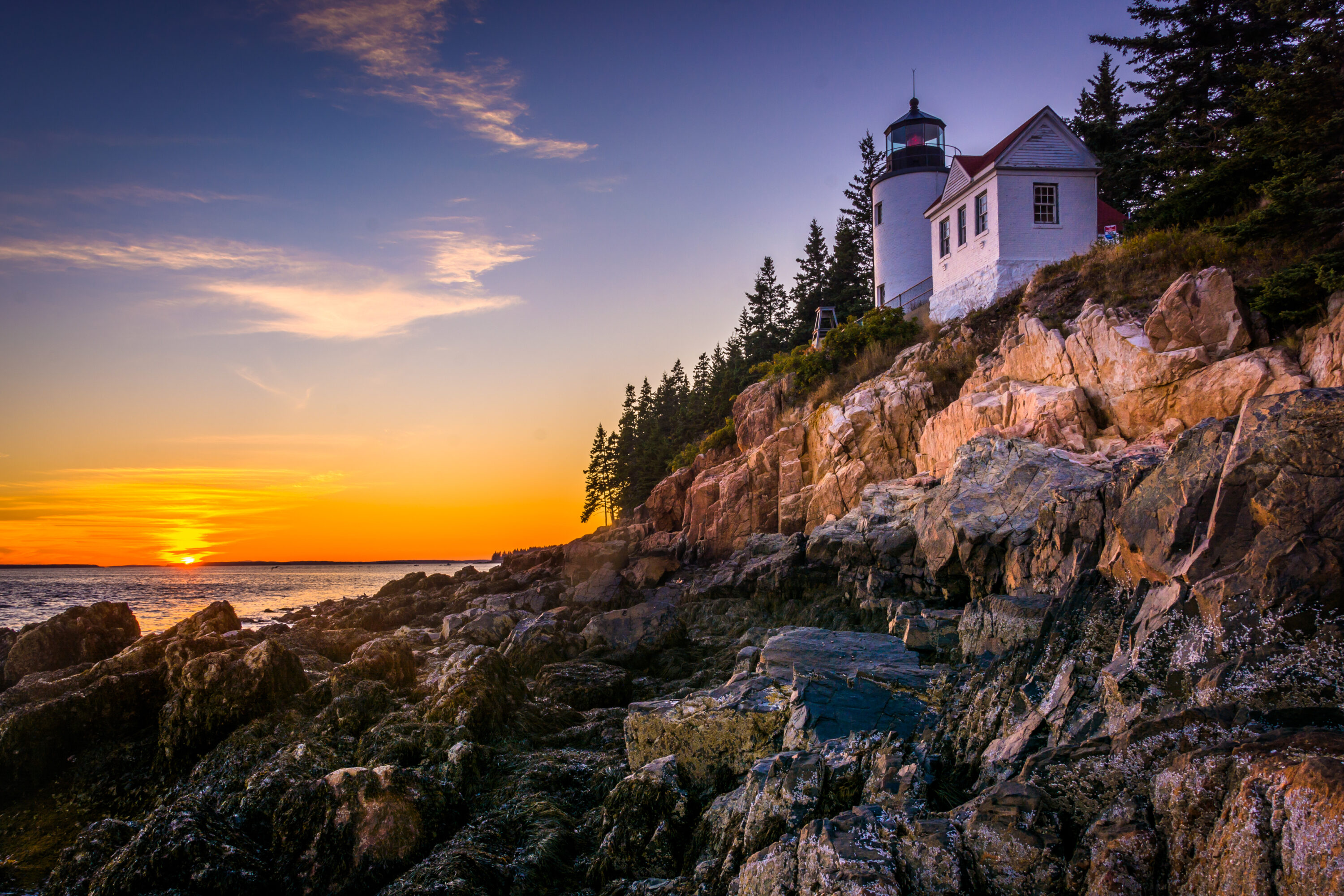
Table Of Contents: Acadia National Park Facts
Acadia National Park Facts
- Facts About Acadia National Park
- Top 5 Acadia National Park Facts
- 1. Acadia Was Created Entirely By Private Land Donations
- 2. Acadia National Park Was Largely Created Through The Tireless Efforts Of One Man
- 3. John D. Rockefeller, Jr., Designed, Funded & Oversaw An Innovative System Of Roads & Bridges
- 4. Acadia Was Rebuilt From The Ashes
- 5. The Park Offers The Highest View On The East Coast
- Top 11 Acadia National Park Facts
- 7. Barack Obama was the first sitting President to visit Acadia
- 8. A Nearby Museum Chronicles The History & Culture Of The Original Inhabitants Of Acadia
- 9. Acadia Is Home To More Than 1,000 Plant Species
- 10. The Weather Can Change Dramatically In Minutes
- 11. Acadia National Park Boasts 37 Different Mammal Species
- Check Out Our Award-Winning Film
- Visit Maine’s Other Exciting National Park Sites
- Map Of Acadia National Park
- List Of Acadia National Park Facts
- Why Trust Us About Acadia National Park?
- Meet The Parks Brothers
- We Hope You’ll Follow Our Journey
Facts About Acadia National Park
Basic Facts About Acadia National Park
Acadia National Park is a national park located in the U.S. state of Maine, along the Atlantic coast. The park covers an area of 47,000 acres on the Schoodic Peninsula and adjacent islands, as well as on the mainland. It was the first national park in the northeastern United States and is known for its rugged coastline, picturesque mountains, and forests.
One of the main attractions of Acadia National Park is its breathtaking coastal scenery, with rocky cliffs, sandy beaches, and picturesque islands.
The park is also home to a number of hiking trails, including the famous Acadia National Park Loop Road, which offers spectacular views of the park’s natural beauty.
In addition to its natural beauty, Acadia National Park is also home to a number of cultural and historical sites, including the historic Sieur de Monts Spring, the Abbe Museum, and the Jordan Pond House, a popular spot for afternoon tea.
The park is a must-visit destination for nature lovers and outdoor enthusiasts, offering a unique blend of stunning natural beauty, rich cultural history, and a wide range of recreational activities.
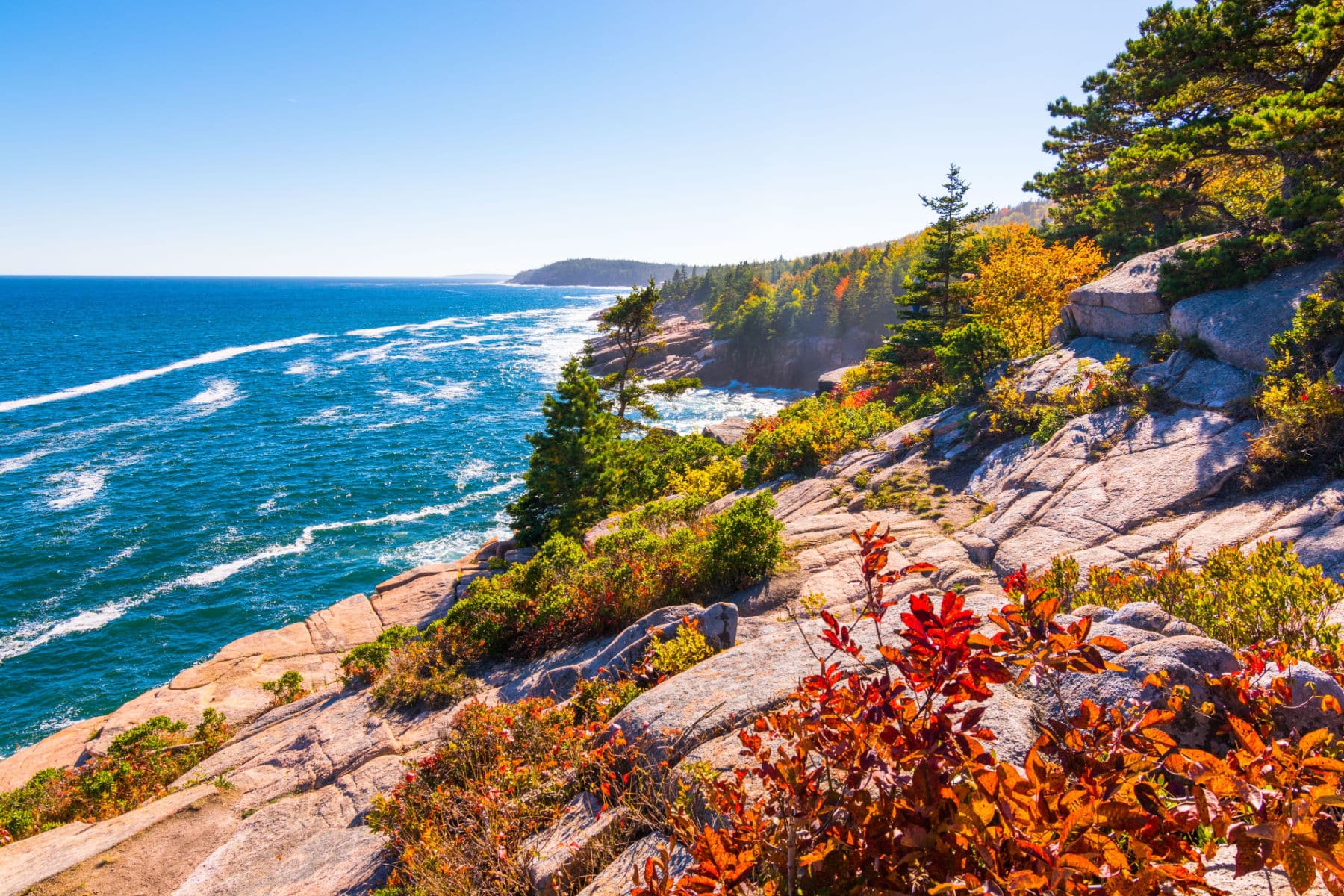
Here Are Some Basic Facts About Acadia National Park:
- Location: Maine
- Acreage: Acadia National Park encompasses more than 48,000 acres on Mount Desert Island, Schoodic Peninsula, Isle Au Haut, and many smaller coastal islands.
- Visitation: Acadia National Park receives more than four million recreational visits each year, making it one of the most-visited national park in the United States. The busiest months are July, August, and September.
- Highest Elevation: The lofty summit of Cadillac Mountain rises to 1,528 feet above sea level, making it not only the highest mountain in Acadia National Park on Mount Desert Island, but the highest point along the entire east coast of the United States.
- Lowest Elevation: As a park with ocean coastline, Acadia’s lowest point is 0 feet at the Atlantic Ocean.
- Average annual precipitation: Annual rainfall is 48 inches.
- When Did It Become A National Park? In 1919, President Wilson signed the act establishing Lafayette National Park.
Acadia National Park Facts
Top 5 Acadia National Park Facts
1. Acadia Was Created Entirely By Private Land Donations
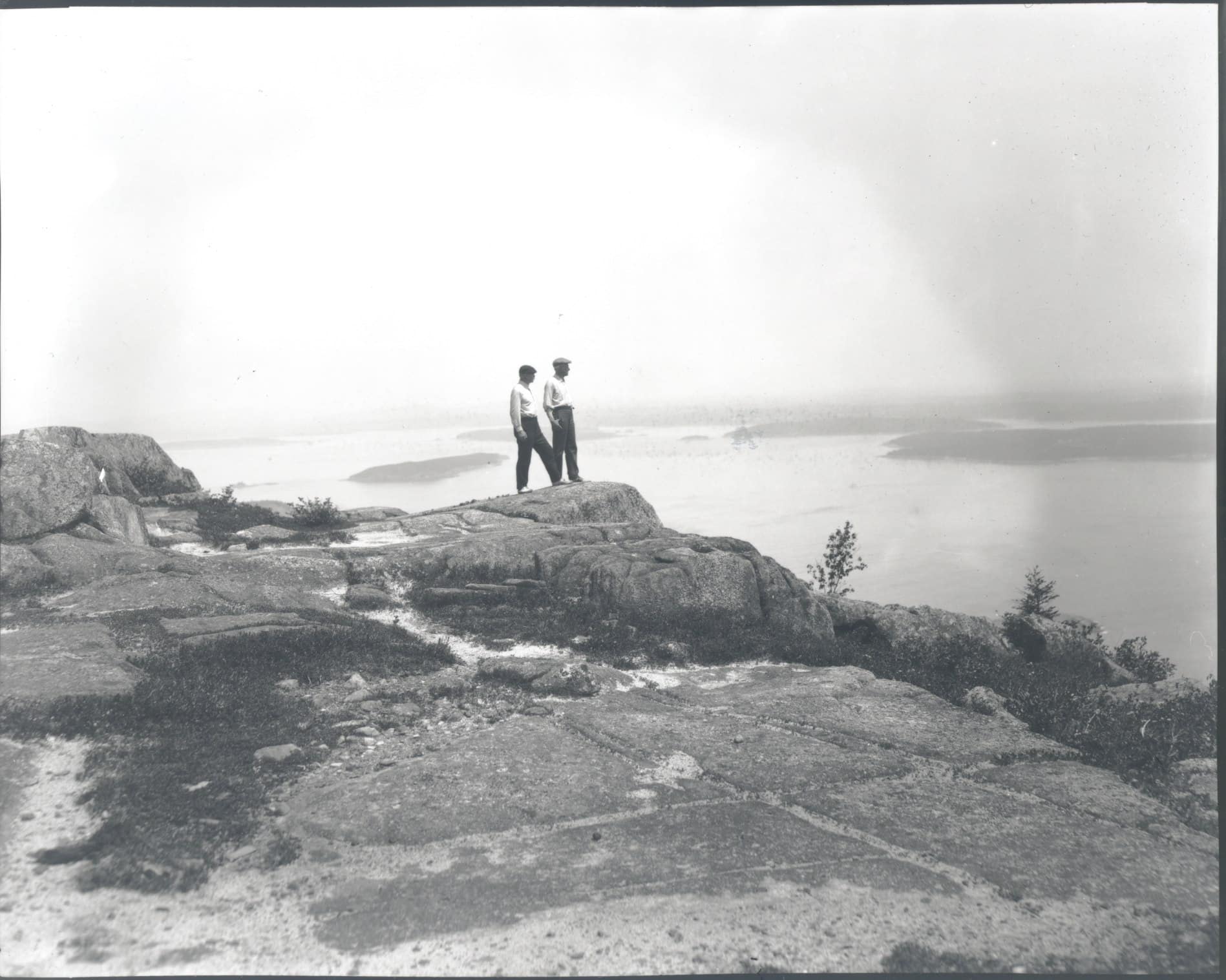
Acadia National Park was the first national park to be created east of the Mississippi River.
One of the most interesting Acadia National Park Facts is this: It’s the only national park in the Northeast.
Acadia is a true coastal wonder. Nestled into the far-flung, rocky coast of Maine, this national park is home to majestic forests, tranquil ponds, rounded mountains and wild coastline.
A little history lesson is in order. In 1604, French explorers Sieur de Monts and Samuel de Champlain arrived. They called it “Acadia,” meaning “heaven on earth.” These two explorers claimed much of Maine for their native France. Of course, there’s an old saying, “the best laid plans of mice and men often go awry.“ As we know, Maine did not become a part of the French Empire.
Much later, however, the area did become a summer retreat for America’s elite. The area comprising Acadia National Park was given back to the people by conservation-minded locals led by George Dorr.
Acadia Was Created Entirely By Private Land Donations

It’s worth noting that Acadia is the only national park created solely from donations of private land. As a consequence, today you can visit this coastal paradise and marvel at its expansive beauty.
Acadia is referred to as the “Crown Jewel of the North Atlantic Coast.” This park protects part of Maine’s magnificent coastline which is unlike any other in the America.
It’s a special park and a must for anyone who loves wild coastline. And I’m speaking as someone who’s been to the shores of Olympic National Park. When it comes to pure beauty, Acadia is in a class by itself in my humble opinion.
On top of it’s famous rocky coast, Acadia is home to beautiful forests of maples, aspen and pines that truly come alive in the fall – making this park a world class autumn destination.
TO LEARN MORE CHECK OUT: Acadia National Park: An (EPIC) Guide To New England’s Premier Park
2. Acadia National Park Was Largely Created Through The Tireless Efforts Of One Man
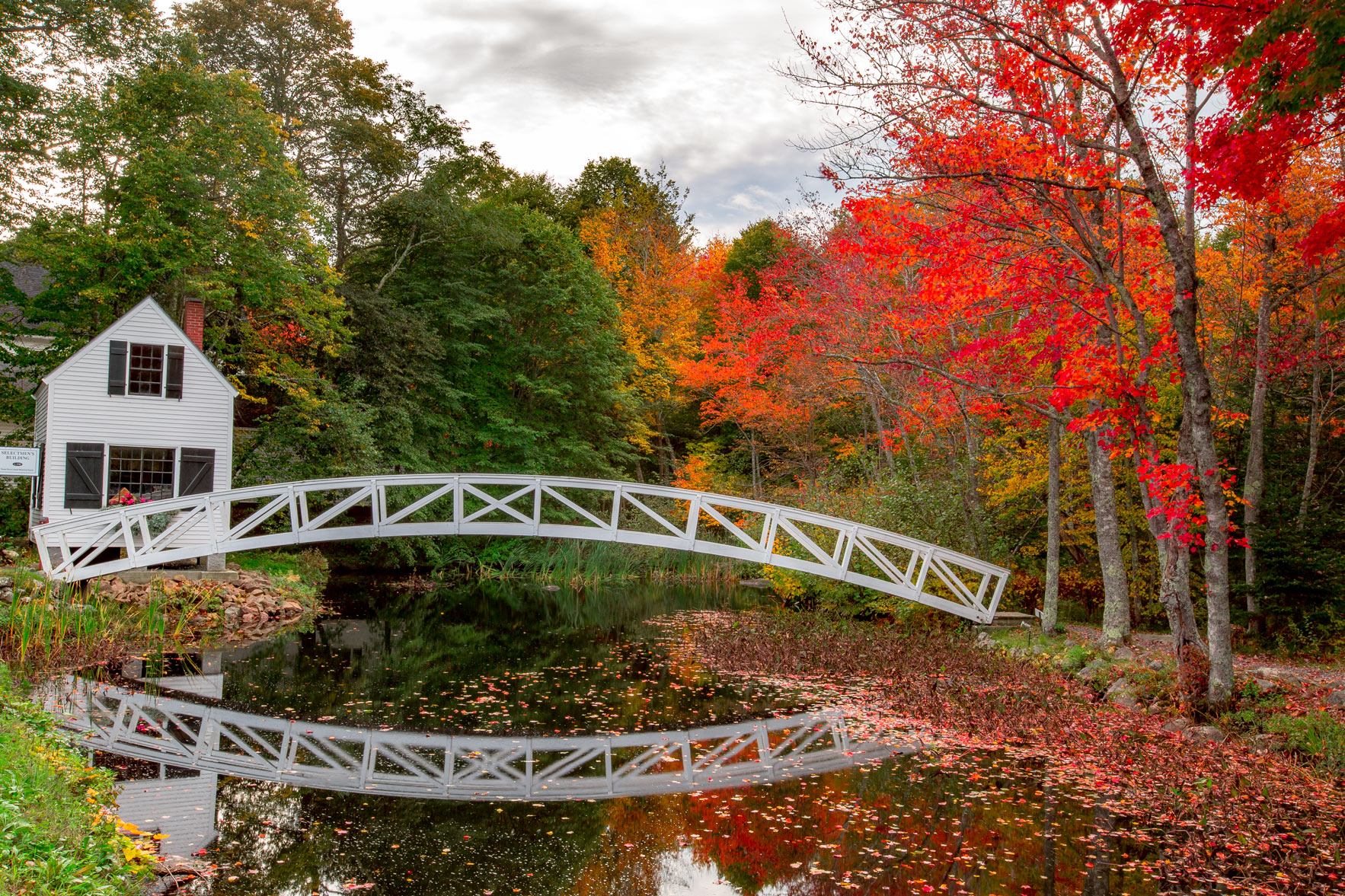
There’s another old saying. “One person can make a difference.” In the case of Acadia National Park, he most certainly did.
As a retired history teacher and lifelong history buff, I love the stories behind these wonderful places which so many of us take for granted. One of those stories concerns a gentleman scholar and Harvard University graduate who fell in love with a place and decided to share it with the world.
For over four decades, he worked tirelessly to acquire tracts of land for protection, build trails and lay plans as a member of civic groups which founded Acadia National Park.
Another fascinating Acadia National Park Fact is that the man who would become the “Father of Acadia National Park” actually donated parcels of his own land and persuaded others to do likewise or donate funds instead.
It was his vision and his passion which ensured these lands would be set aside for the enjoyment of generations yet to come.
George Dorr’s Gift To The World
So who was this man? What was his story? Now that I’ve peaked your curiosity, it’s time to share the incredible story of George Dorr.
Dorr was a private citizen whose life covered the last half of the 19th and the first half of the 20th centuries. He was a child of privilege, the son of affluent Bostonians. He inherited fortunes from both of his parents and traveled widely in Europe with his parents.
George Dorr also had a love of nature. In 1869, he first visited Mount Desert Island on a vacation with his parents. It was then that he made the decision to make the island his primary home.
Dorr, however, wanted to do much more than that. He wanted to share the natural beauty of this magical place with the rest of the world. That became his life’s passion and his life’s work.
Saving the Land for Acadia

George Dorr, Charles Eliot, and others established the Hancock County Trustees of Public Reservations in 1901 for the purpose of “…acquiring, owning and holding lands and other property in Hancock County for free public use.”
Dorr spent most of his own fortune to acquire the land around Mount Desert Island and, along with generous donations from others, The Hancock County Trustees eventually amassed over 6,000 acres.
The Maine Legislature eventually caught wind of what they were doing. Some in the legislature didn’t like the Trustees removal of so much private property from potential taxation. So they tried to revoke the Trustees non-profit status.
This would have ensured the land was too expensive for Dorr and the Trustees to keep preserved. In response, Dorr traveled to Augusta. He fought the state legislation. Eventually, he defeated the measure.
Dorr was keenly aware that the area needed federal protection to save it for future generations to enjoy. He turned his attention to getting that protection.
“In my opinion, it could have been named George B. Dorr National Park, for if ever a park was achieved by the inspiration and determination of one man, it was this one.”
-Horace Albright, 2nd Director of the national park service, in the birth of the national park service
Establishing the Park

After substantial wrangling, Dorr managed to present 5,000 acres of land to the federal government in 1916. President Woodrow Wilson responded by creating Sieur de Monts National Monument.
“Dorr agreed to become superintendent [of the national monument] at a salary of one dollar per year. And with dogged singlemindedness, he gathered support from every possible quarter and got legislation introduced in Congress.
-Horace Albright, 2nd Director of the national park service, in the birth of the national park service
When Dorr heard learned that the House Appropriations Committee was holding it up late in 1918, he prevailed on ex-President Roosevelt, who wrote a letter to the committee.
Thus, as a result of George Dorr’s almost superhuman efforts, the legislation creating Lafayette National Park was signed by the President on February 26, 1919.”
Full park status came three years later after Dorr led the acquisition of more land. President Wilson signed the act creating Lafayette National Park.
Just as he had served as superintendent when it was a national monument, the national park’s first superintendent was none other than George Dorr.
Dorr Was Committed To Acadia
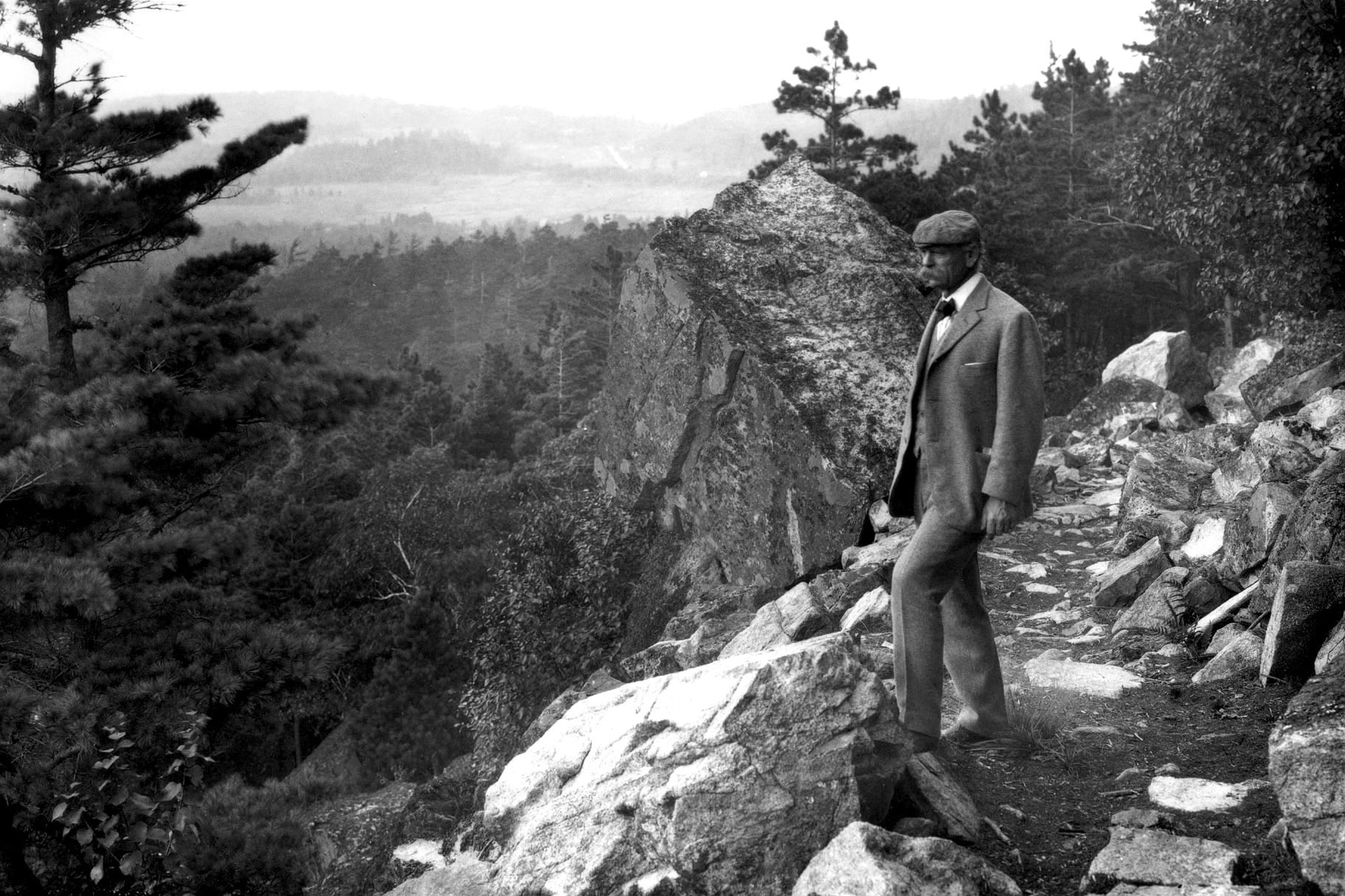
Dorr spent the next two decades committed to the successful expansion and preservation of Acadia. The park superintendent never retired from the job he loved.
His Old Farm estate was accepted as a park property one month before the attack on Pearl Harbor. Dorr continued working on land acquisitions until August 5, 1944, when he died from heart failure.
To learn more about George Dorr and his incredible story, I recommend reading Creating Acadia National Park: The Biography of George Bucknam Dorr by Ronald H. Epp.
Visiting Acadia National Park? If you haven’t decided where to stay (yet) check out our helpful guide on visiting Acadia National Park for tips. Don’t have time? Here’s our favorite hotel in Acadia.
3. John D. Rockefeller, Jr., Designed, Funded & Oversaw An Innovative System Of Roads & Bridges
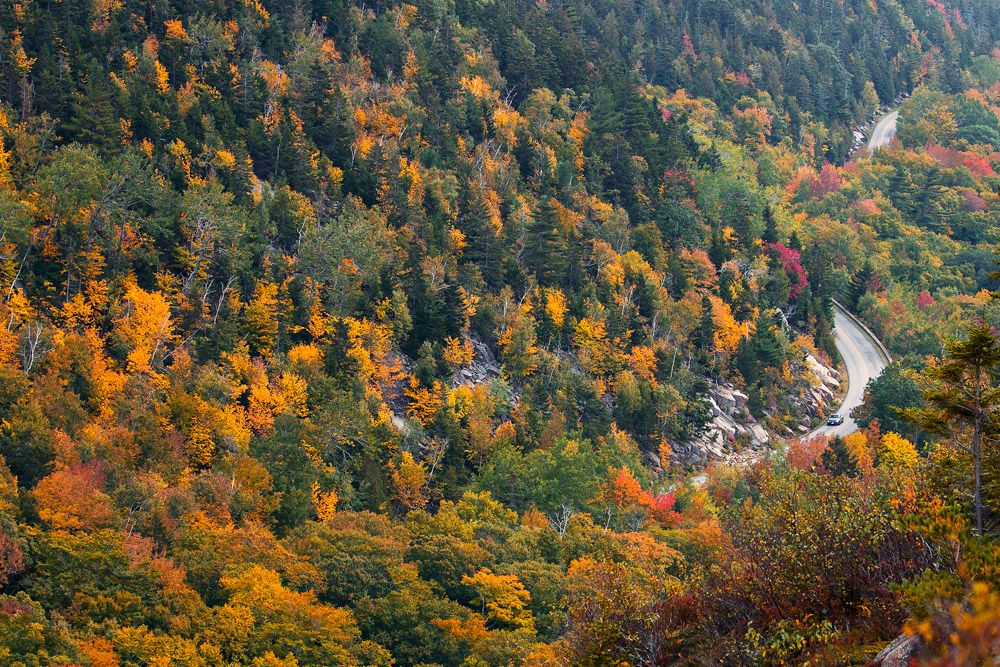
No man is an island. Not even the man who lived on Mount Desert Island–George B. Dorr. To make Acadia National Park a special place he needed the help of one of America’s wealthiest and most powerful families.
Now here’s another one of those fascinating Acadia National Park Facts: John D. Rockefeller, Jr., the son of the man who founded Standard Oil, was one of the most generous donors to the park.
He eventually donated 11,000 acres of land to Acadia.
Like Dorr, Rockefeller had also fallen in love with the natural beauty of the area. He bought a summer home in 1910 in Seal Harbor. As a part-time resident of this area, Rockefeller had the foresight and intuition to realize that traffic could potentially ruin a place as beautiful as this one.
There should be an alternative route of transportation for visitors.
Rockefeller’s efforts to make this a reality was perhaps his greatest contribution to Acadia National Park.
An Innovative System Of Roads & Bridges

Between 1913 and 1945, Rockefeller purchased land in the park and designed a plan for a carriage road system—something that would become a signifying feature of this beautiful park.
Rockefeller began road construction in 1927. He hired famed landscape architect Frederick Law Olmsted Jr. to design many of the routes.
Rockefeller’s roads would span 57 miles and include 17 stone bridges – bridges of elaborate design with a classic stone face. He designed, funded and oversaw this innovative system of roads and bridges himself.
The stone roads were intended for carriages. They were sixteen feet wide. The stone was actually quarried from the ancient granite foundations of the island. Additionally, they were engineered with three layers of rock, undercut by stone culverts and alongside of them were wide drainage ditches.
Rockefeller’s Teeth
Now here’s another interesting Acadia National Park Fact: In addition to the cedar signposts and magnificent stone bridges there are also large coping stones. These stones serve as guardrails. These massive, irregularly shaped and arranged blocks of granite were nicknamed “Rockefeller’s Teeth.”
It’s also important to note that much of the manual labor required to build the park’s carriage roads and trails was provided by the Civilian Conservation Corps beginning in 1933.
Rockefeller’s innovative road system has given visitors an easy way to enjoy all of the natural wonders this park has to offer.
Take A Deeper Dive
To learn more about John D. Rockefeller, Jr.’s, conservation efforts, I recommend a wonderful book titled A contribution to the heritage of every American: The conservation activities of John D. Rockefeller, Jr. by Nancy Newhall.
If you’re interested in taking a deeper dive other books I would also recommend include: Acadia’s Carriage Roads, by Robert A. Thayer and Acadia: The Story Behind the Scenery, by Robert Rothe.
4. Acadia Was Rebuilt From The Ashes

The 1947 fire at Acadia National Park in Maine was a devastating event.
The cause of the fire is unknown, but it is believed to have started on October 17th, 1947, in a cranberry bog near Dolliver’s dump on Crooked Road.
The fire smoldered underground before growing into an inferno that burned almost half of the eastern side of Mount Desert Island. The incident received international news coverage.
Rebuilding From The Ashes
A staggering 17,188 acres burned. More than 10,000 were in Acadia National Park. Property damage exceeded $23 million dollars. Regarding casualties, an elderly man returned to his home to save his cat. He was never seen alive again. A car accident claimed the lives of an air force officer and a local teenage girl. And a man and a woman, already ill, succumbed to heart attacks.
The National Park Service then went to work to rebuild from the ashes. Two crews, one hired by the park and one hired by the Rockefeller family, logged selected park areas for timber salvage and clean-up.
And out of this tragedy came some good news. Today’s forest is different than what existed before the fire. Spruce and fir which reigned before the fire have given way to sun-loving trees, such as birch and aspen.
Creating An Appearance In Keeping With Millions Of Middle Class Americans
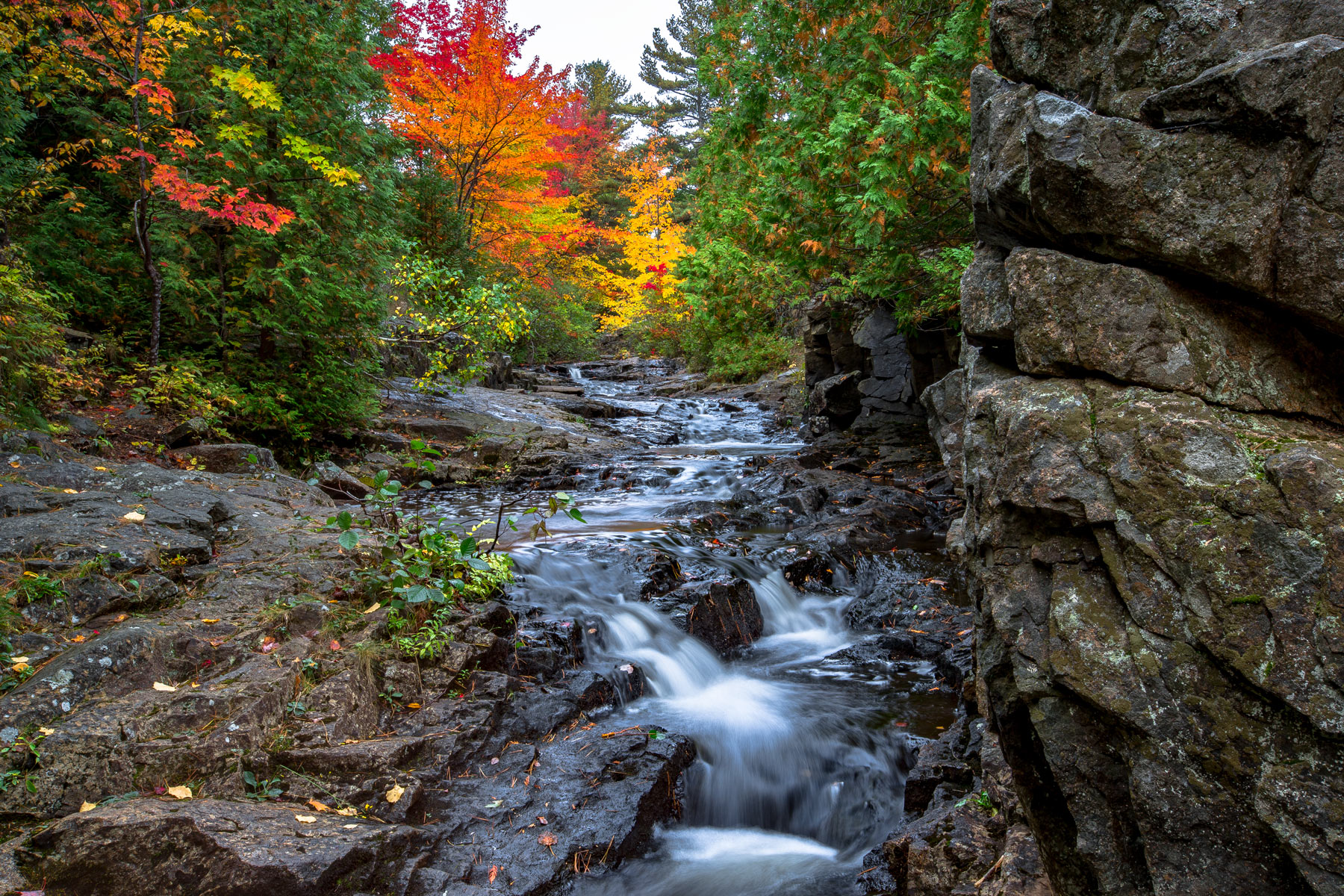
Today Acadia offers visitors a more diverse experience.
What’s a truly astonishing Acadia National Park Facts is that the fire of 1947 actually enhanced the scenery by increasing diversity in the composition and age structure of the park’s forests.
The fire also gave the area an appearance that was more in keeping with the millions of middle class Americans who have frequented Acadia over the years. While most of the permanent residents rebuilt their homes, many of the grand summer cottages were never replaced. And the estates on Millionaires’ Row were replaced by motels which house the ever-increasing tourist population.
To learn more about Acadia’s past, I recommend reading Historic Acadia National Park: The Stories Behind One of America’s Great Treasures by Catherine Schmitt.
5. The Park Offers The Highest View On The East Coast
If you’re interested in getting high (and of course I’m referring to climbing to the highest elevation) then Acadia National Park offers you the highest overlook on the East Coast. It’s just another one of those amazing Acadia National Park Facts.
One of the park’s peaks, Cadillac Mountain, just happens to be the tallest mountain on the East Coast. How tall you might ask? How about 1530 feet! From there you will be treated to some spectacular views from the mountain’s incredible pink granite summit.
If you’re interested in a little history (and who isn’t), Cadillac Mountain is named after French explorer Antoine Laumet de La Mothe sieur de Calliac. While in the Americas, he also founded the city of Detroit and served as the Governor of Louisiana.
If you’re looking to get in your steps then you can hike to the top of this mountain via a variety of trails. Or, if you prefer a relaxing drive, you can travel to the peak of Cadillac via a 3.5-mile-long road. Be advised, however, that the Cadillac Mountain road is closed from December 1st through April 14.
New here’s another interesting fact. From Oct. 7th through March 6th, Cadillac Mountain is the first place in the United States where people can see the sun rise. Just one more reason to make the trek up this amazing mountain.

Top 11 Acadia National Park Facts
6. Acadia Is One Of America’s Smallest National Parks

There’s an old saying that “you can’t judge a book by its cover.” In the case of Acadia National Park, you can’t judge a park by its size.
Acadia happens to be one of America’s smallest national parks.
In fact, it’s the fifth smallest national park by land area in the United States.
Nevertheless, it’s among the top twenty most visited national parks.
In 2021, Acadia hosted four million visitors putting it at #16 on the list of the most visited national parks in America.
Additionally, Acadia National Park includes about 49,000 acres featuring nearly 13,000 in conservation easements for private lands and 31,000 on Mount Desert Island.
7. Barack Obama was the first sitting President to visit Acadia

Believe it or not, Acadia National Park was not visited by a sitting President of the United States until the 21st Century. President Barack Obama was the first sitting president to visit Acadia, having vacationed in the park in July of 2010 with his family.
Now if you do some research, you’ll learn that another sitting President actually travelled there one hundred years before President Obama. President William Howard Taft went to Mount Desert Island in 1910. So why isn’t he considered the first sitting President to have visited Acadia?
That’s a good question. If you refer back to the history of Acadia then you’ll remember that it did not actually become a national park until 1919 when President Woodrow Wilson signed the act establishing Lafayette National Park. As a matter of fact, when President Taft visited the place, it wasn’t even a national monument.
While Acadia gained national park status in 1919, it wasn’t until ten years after that, when Congress authorized the National Park Service to accept a donation of land on the Schoodic Peninsula, that the park’s current name, Acadia National Park, was adopted.
Now here’s another one of those interesting Acadia National Park Facts. Before President Obama took his family to Acadia, in September of 2009, filmmaker Ken Burns went to the White House. He gave the President a private viewing of his series: “The National Parks: America’s Best Idea.”
Perhaps watching this amazing series gave the President an idea regarding where he should take the First Family on their next vacation.
8. A Nearby Museum Chronicles The History & Culture Of The Original Inhabitants Of Acadia

The Wabanaki Indians, also known as the “People of the Dawnland,” are a group of four tribes – the Maliseet, Micmac, Passamaquoddy, and Penobscot – who have inhabited the land now known as Maine for over 12,000 years.
They traveled by seaworthy birchbark canoes, setting up temporary camps and hunting, fishing, gathering berries, harvesting clams, and trading with other tribes.
In the 1500s, Wabanaki peoples guided French colonizer Samuel de Champlain, who was impressed by the natural beauty of the area.
But despite this, European colonizers attempted to displace and erase the Wabanaki people.
Despite these challenges, the Wabanaki people have remained committed to preserving their culture throughout the centuries, resisting attempts of displacement.
You can learn about the culture of the Wabanaki at the Abbe Museum. It’s located in Bar Harbor, Maine. The museum is a native-guided experience of Wabanaki art, history and culture.
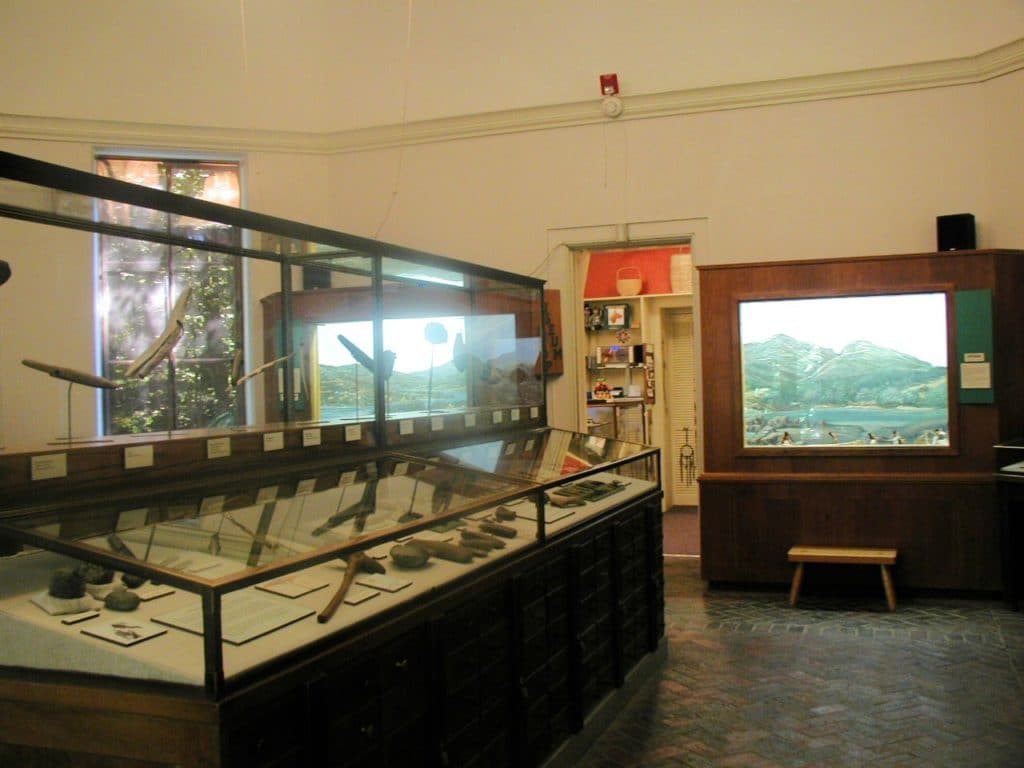
In partnership with the Smithsonian Institution, the museum holds the largest and best documented collection of Maine Indian basketry. It has built an extensive contemporary collection, documenting the continuing Wabanaki craft tradition in Maine.
9. Acadia Is Home To More Than 1,000 Plant Species

When it comes to fascinating Acadia National Park Facts, the park is actually is home to more than 1,000 plant species.
Species commonly found within the park include ash, aspen, spruce, beech, pine, maple, white-cedar and birch trees. Wild strawberry, blueberry shrubs and mayflower inhabit roadsides and meadows within the park.
Bogs, freshwater marshes, and ponds are home to cranberry, huckleberry, snowberry, cat-tail, water-lily and winterberry. Juniper, rose and raspberry shrubs are commonly found on mountain tops and dry, rocky places within Acadia.
10. The Weather Can Change Dramatically In Minutes
When you travel to one of America’s natural wonderlands, it’s always wise to dress appropriately. Only, in the case of Acadia National Park, that’s easier said than done.
Believe it or not, it can go from hot and sunny to cold and wet in a matter of minutes. Although summers on Mount Desert Island are generally warm and sunny, conditions can change in an instant. What started out as a sunny day can end in rain, fog or (in rare cases) hail. Or, as one resident said to me when I was visiting, “Come to Acadia and experience the four seasons–in a weekend.”
Perhaps Mark Twain said it best when he wrote, “I reverently believe that the Maker who made us all makes everything in New England but the weather. I don’t know who makes that, but I think it must be some raw apprentices in the weather-clerk’s factory.”
The Best Time To Visit Acadia
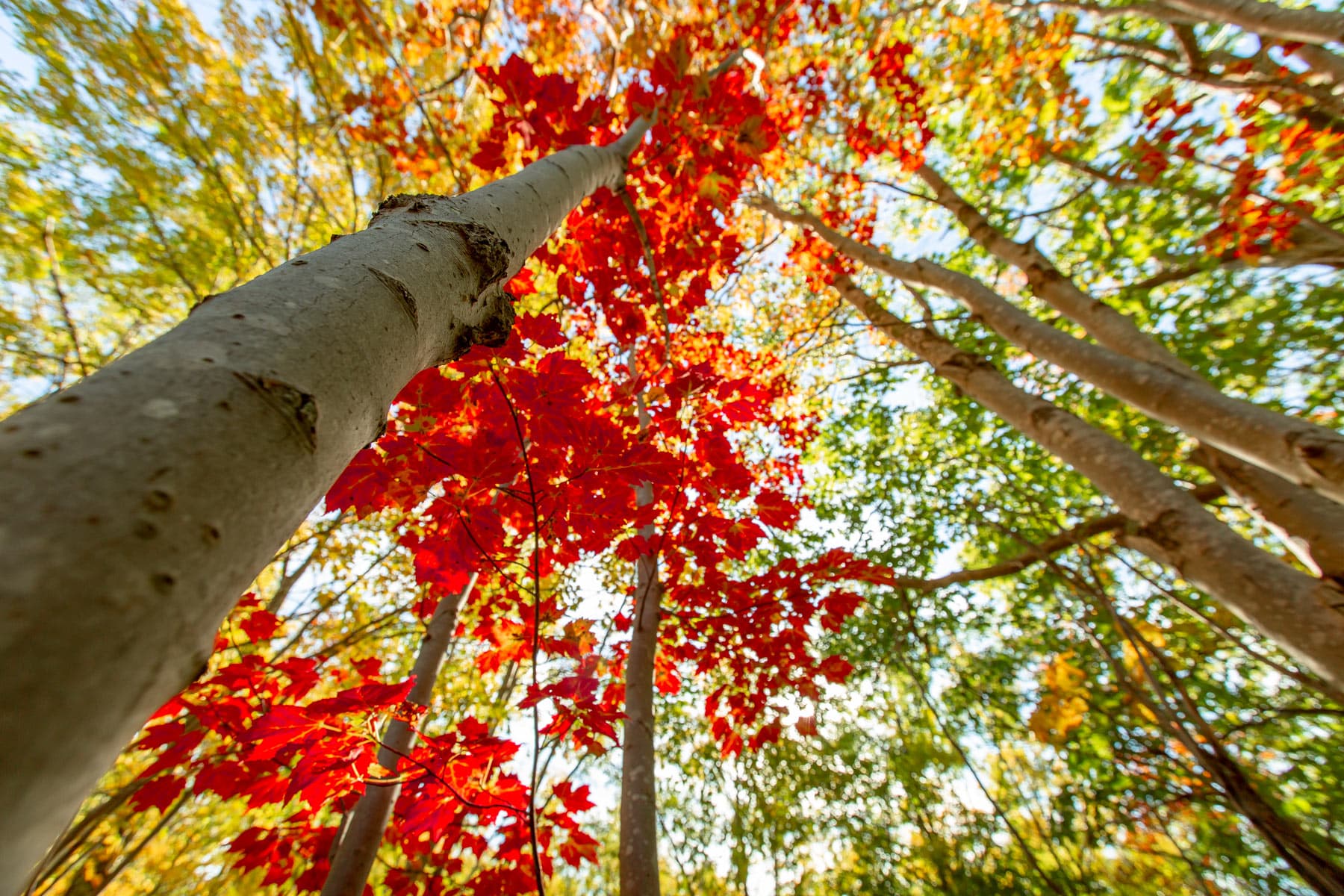
The best time to visit is in July and August as temperatures reach highs of 76 degrees and conditions are generally less wet. In June, July and August, when inland Maine is hot and humid, the Gulf of Maine’s cold water keeps Acadia’s temperatures mild. Be forewarned, however, that the park is at its busiest during this time.
I recommend visiting in the fall when the colors are spectacular and the park is not quite as crowded. Of course, if you’re willing to brave the colder temperatures than the park can also be quite spectacular during the winter too. And you may actually discover that you have the entire place to yourself.
11. Acadia National Park Boasts 37 Different Mammal Species

For wildlife watchers, Acadia features 37 different wildlife species. These include: black bears, bobcats, coyotes, foxes, minks, muskrats, racoons and white-tailed deer. Additionally, aquatic species can be cited offshore. They include: otters, porpoises, seals and whales.
And I haven’t forgotten about the bird watchers either. They spot 2,500 birds a year on average including: eagles, falcons, osprey, owls and vultures.
If You Like Bird Watching Then You Have Some Famous Company At Acadia

James Bond, an ornithologist, not the fictional spy, played a significant role in the history of bird-watching in Acadia National Park.
He is famous for his explorations in the Caribbean and also famous for being the namesake of Ian Fleming’s secret agent. Bond, as a child, had spent summers with his uncle on Mount Desert Island.
In 1941, he wrote “The Birds of Mt. Desert Island, Acadia National Park, Maine” along with his co-author Carroll Tyson.
Bond credited Mount Desert Island as the place that inspired him to become an ornithologist.
For bird watching, the best places are Cadillac Mountain, Otter Point, Thompson Island, Jordan Pond and, of course, Mount Desert Island. If it’s good enough for James Bond then it’s good enough for you too!
So, How Did Fleming Come Up With The Name?
“There really is a James Bond, you know, but he’s an American ornithologist, not a secret agent,” Ian Fleming explained in an interview for Rogue Magazine. “I’d read a book of his, and when I was casting about for a natural-sounding name for my hero, I recalled the book and lifted the author’s name outright.”
The book that Fleming was referring to was Birds of the West Indies, published in 1936 after Bond had spent a decade exploring the islands of the Caribbean. The 460-page field guide, which features 159 black-and-white illustrations, became the go-to resource for Fleming, who lived in Jamaica.

Now for me, that’s one of the most interesting Acadia National Park Facts.
To learn which national parks played a cameo role in the James Bond film franchise and other blockbuster movies, check out More Than Just Parks article: Look Familiar? 25+ CLASSIC Movies Filmed In The National Parks
Check Out Our Award-Winning Film
More Than Just Parks is the only place you can go to find expert guides, beautiful photos, helpful tips, breathtaking films and so much more.
MTJP | Acadia is the culmination of several weeks spent exploring Acadia National Park during peak fall color. The film is dedicated to George Dorr, who was instrumental in saving the land and founding the park. Journey with us as we explore this magnificent coastal wonderland in stunning fall color.
The Pattiz Brothers spent 15 days exploring Acadia National Park to film it at the peak of the fall foliage’s brilliance.
Inland, the film documents visits to ponds created by beavers, lighthouses that warn fisherman of jagged rocks and steep valleys carved by glaciers long ago.
Visit Maine’s Other Exciting National Park Sites

It’s More Than Just Parks Comprehensive Guide to all of Maine’s beautiful national park sites. There’s so many beautiful places to see and wonderful things to do while spending time in Maine.
To be clear, these include national park sites (as in managed by the National Park Service) but not capital letter National Parks. To learn more about the difference between the various National Park Service designations check out our article that explains everything!
More Than Just Parks is your one-stop-shop when it comes to learning everything you’ll need to know about America’s national parks. We’ve got expert guides, beautiful photos, helpful tips, breathtaking films and so much more.
CHECK OUT: 6 Epic Maine National Parks Worth Visiting
Map Of Acadia National Park
List Of Acadia National Park Facts
- Acadia National Park Was Largely Created Through The Tireless Efforts Of One Man
- John D. Rockefeller, Jr., Designed, Funded & Oversaw An Innovative System Of Roads & Bridges
- Acadia Was Rebuilt From The Ashes
- The Park Offers The Highest View On The East Coast
- Acadia Is One Of America’s Smallest National Parks
- Barack Obama was the first sitting President to visit Acadia
- A Nearby Museum Chronicles The History & Culture Of The Original Inhabitants Of Acadia
- Acadia Is Home To More Than 1,000 Plant Species
- The Weather Can Change Dramatically In Minutes
- Acadia National Park Boasts 37 Different Mammal Species
Why Trust Us About Acadia National Park?
We’re Jim Pattiz and Will Pattiz, collectively known as the Pattiz Brothers (and sometimes the Parks Brothers) and we absolutely LOVE the national parks.
You should probably know that we don’t just make this stuff up out of thin air. We’ve spent our entire adult lives exploring and filming America’s national parks and public lands.
We’ve worked with the National Park Service, the Department of Interior, USDA, and the U.S. Forest Service for years creating films on important places and issues. Our work has been featured in leading publications all over the world and even some people outside of our immediate family call us experts on the national parks.

Meet The Parks Brothers
We Hope You’ll Follow Our Journey
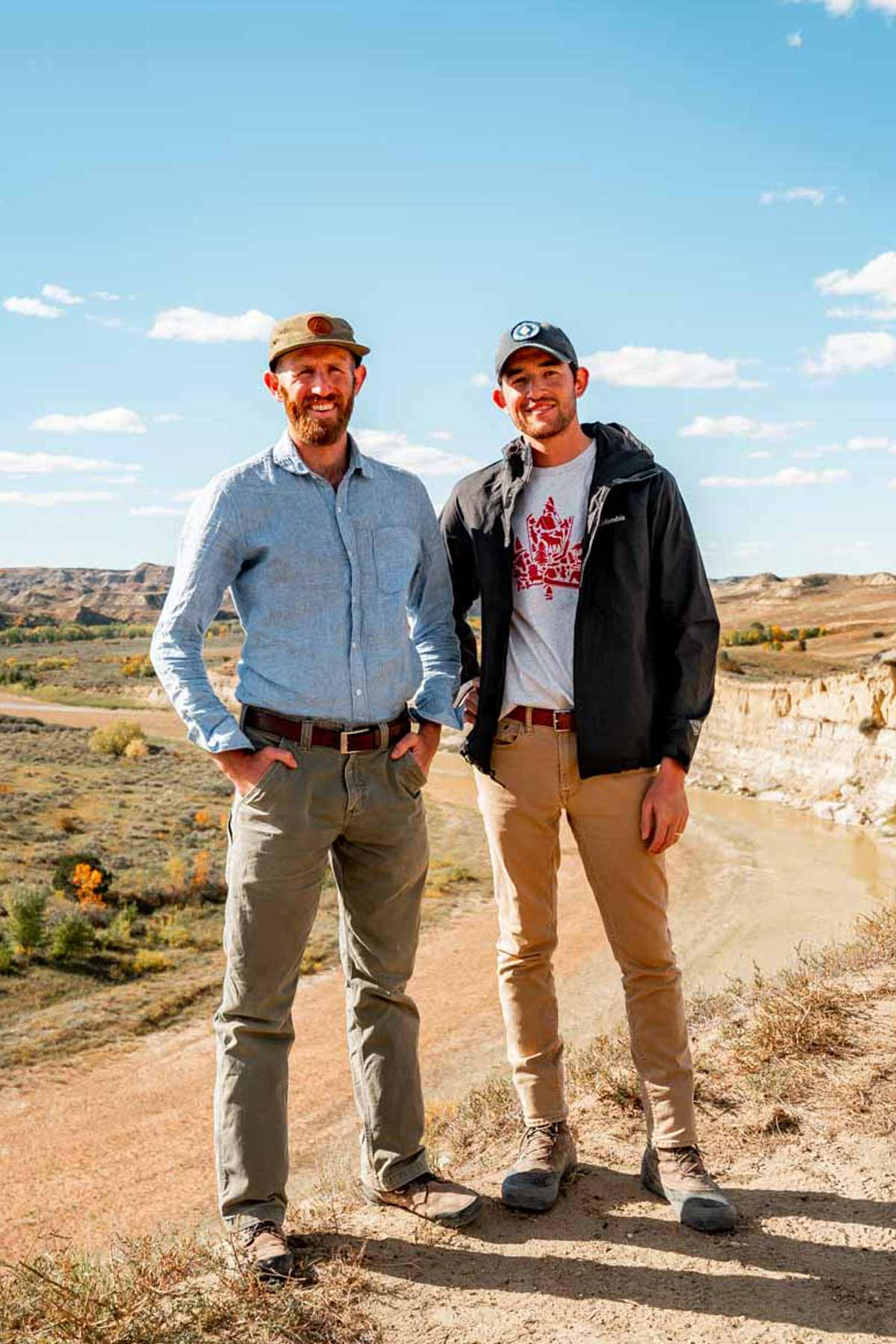
Our goal here at More Than Just Parks is to share the beauty of America’s national parks and public lands through stunning short films in an effort to get Americans and the world to see the true value in land conservation.
We hope you’ll follow our journey through the parks and help us to keep them the incredible places that they are. If you’re interested in joining the adventure then please sign up below!
Helpful Links
Maine National Parks: 6 Epic Maine National Parks Worth Visiting
Acadia National Park: An EPIC Guide To New England’s Premier Park
Things To Do: 15 EPIC Things To Do In Acadia National Park
Spring: Acadia In Spring
Summer: Summer In Acadia
Winter: Winter In Acadia
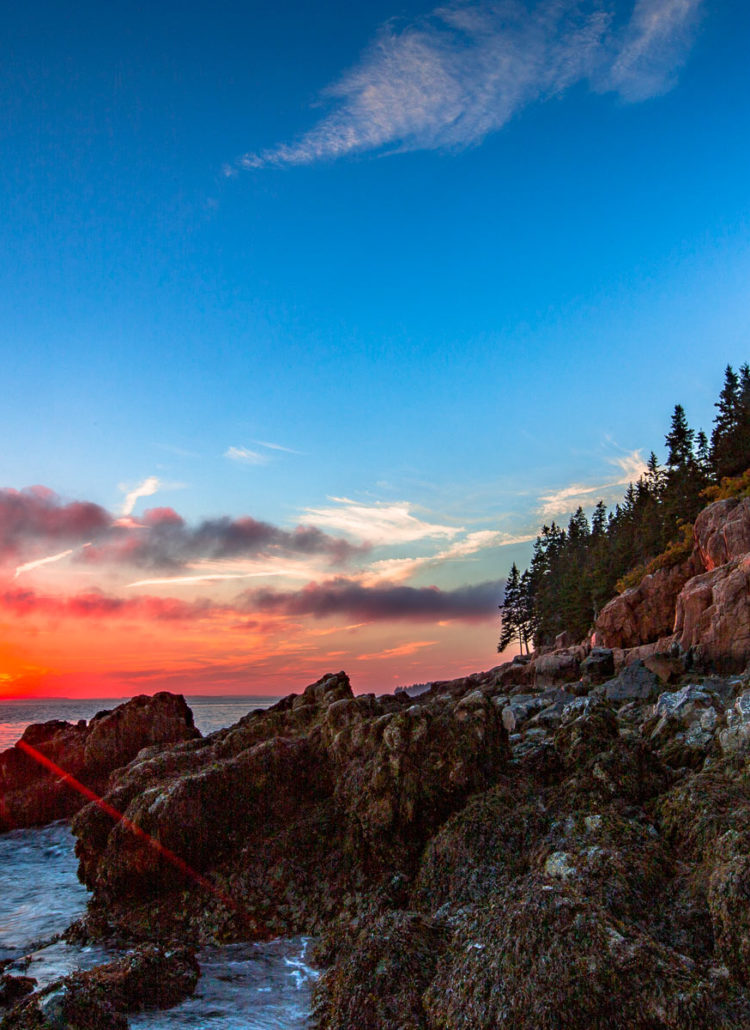
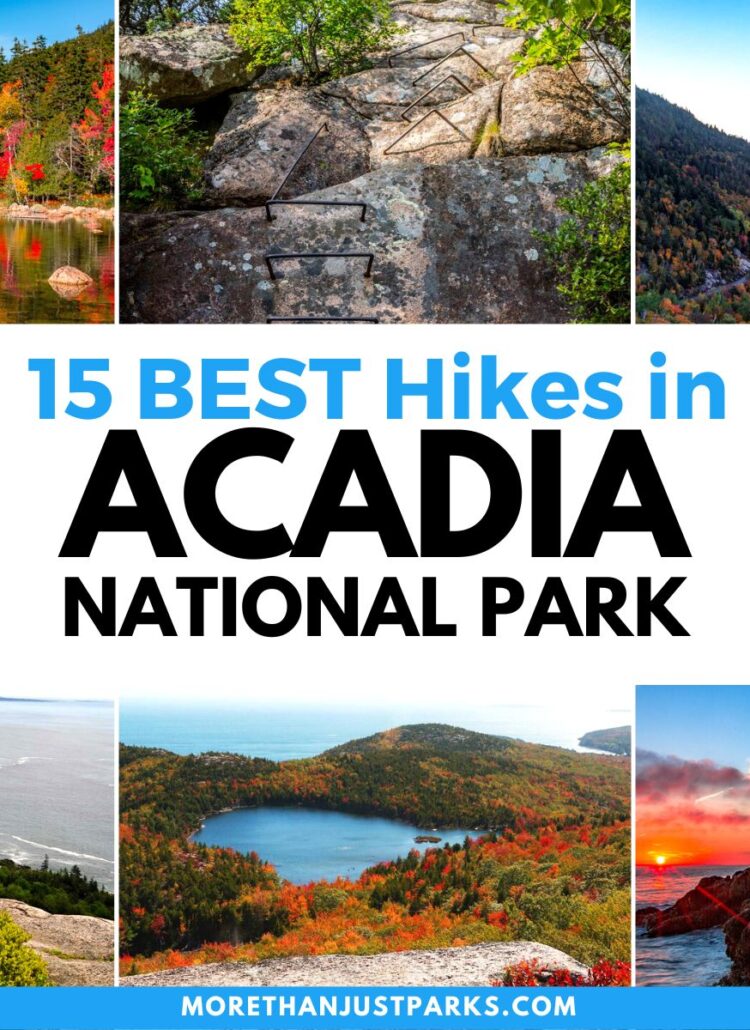


Hey guys, in your quick facts, you cite two facts about Glacier Bay National Park…. NOT Acadia! simple fix, but wanted to let you know. My friend was here telling me that Maine had a 15k foot mountain!
Great catch Andrew! The article has now been corrected. Thanks for letting us know.
Unless Cadillac had some major tectonic activity I’m guessing there’s still no 15ers in Acadia 🙂
Cheers,
Will
Thank you for your extraordinary/exceptional summary of facts and issues related to Acadia National Park. I was born in Bass Harbor (it was called McKinley at the time) in 1940. My mother was 1/4 Penobscot and my father was Danish. Think how enriching it would be for your descriptions to make reference to the indigenous peoples described in your articulate journals. Be well.